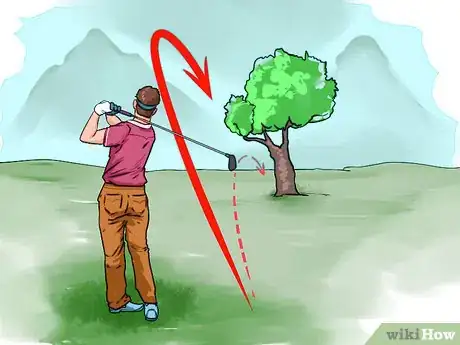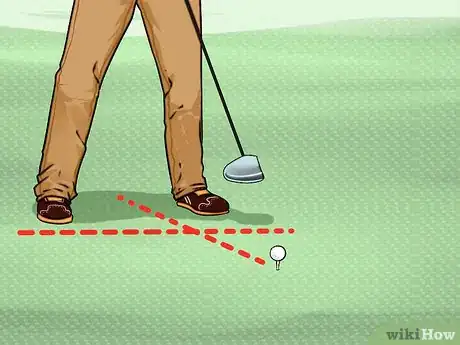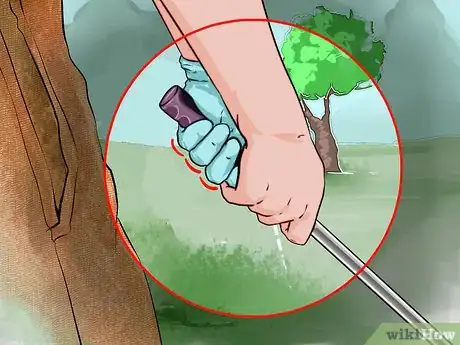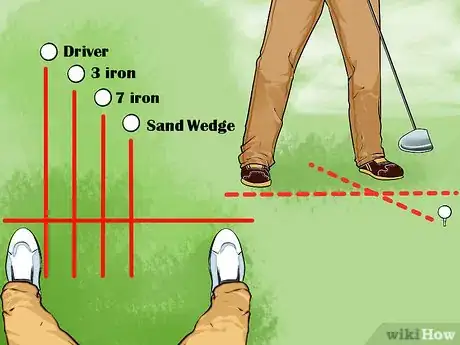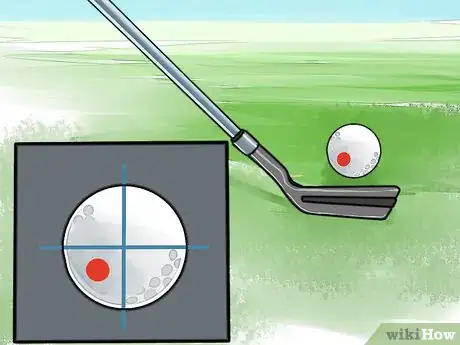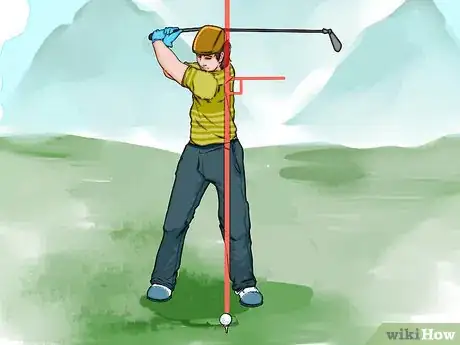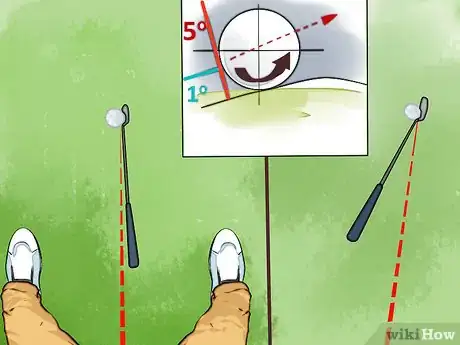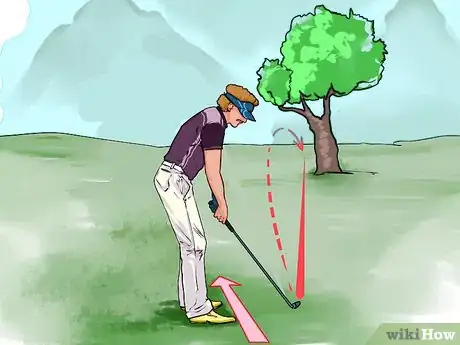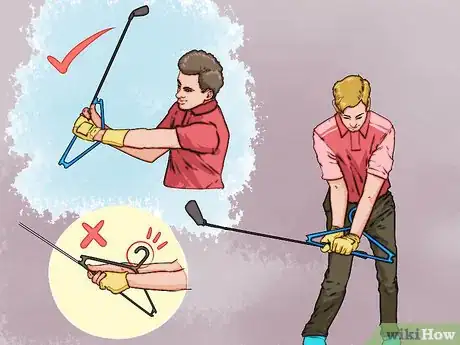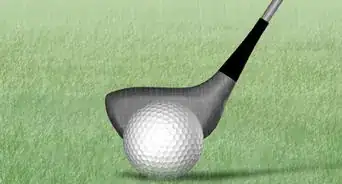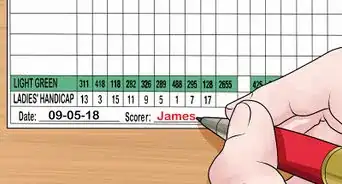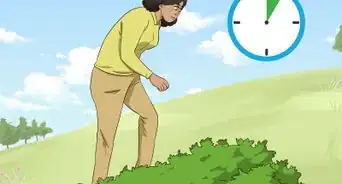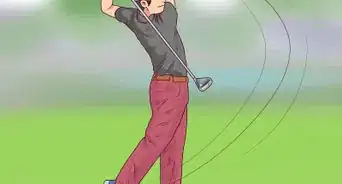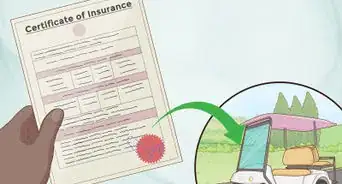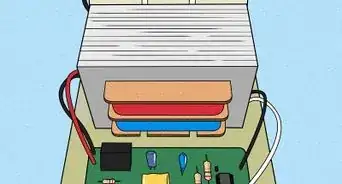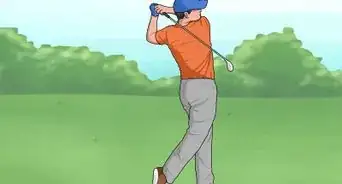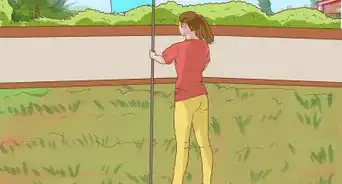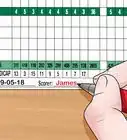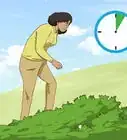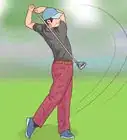wikiHow is a “wiki,” similar to Wikipedia, which means that many of our articles are co-written by multiple authors. To create this article, 14 people, some anonymous, worked to edit and improve it over time.
This article has been viewed 147,866 times.
Learn more...
The power fade is an advanced golf shot that has been used for years, but recently mastered and brought to the forefront of the golf game by young players such as Tiger Woods, Phil Mickelson, and Ernie Els. For advanced players, the power fade adds a whole new element to one's arsenal of shots... but do not mistake the power fade for the ballooning-megaslice that is hit by most amateur golfers.
Steps
Setting Up Your Shot
-
1Know what it is and when to use it. A power fade is when you purposely drive the ball and the ball curves from left-to-right from the tee. The ideal time to use it is when there is trouble on the left of a hole, forcing you to turn to the right. A power fade may be easier than hitting a straight drive.[1]
- A shot may have the same movement because the clubface was accidentally left wide open upon impact or when you slice the ball, accidentally cutting across its face.[2]
- You may also use the power fade when your tee shot already has a left-to-right curve but, during the curve, the ball loses momentum. You may also use the power fade for a consistent shot off the tee.[3]
-
2Tee the ball and position your feet. Place the ball on the right of the tee box. Give yourself more room for your drive to move to the left before curving towards center. Place the tee one ball width ahead of your normal stance. Align your stance to a location between the troubled section on the left and the center of the fairway.This alignment is going to be the line your shot will follow before it moves towards center.[4]
- Your body, feet, hips and shoulders should be in the direction where you want the ball to start off, which is towards the left of the green. Your club should be aimed toward the pi, which is where you want the ball to end.[5]
- Keep your tee low. Line the equator of your ball with the sweet spot of your club. Keeping the tee height low encourages your swing to stay level through impact and discourage a pull hook.
- Placing the tee slightly ahead of your stance and lower than normal forces you to hold your release which keeps the face open.[6]
Advertisement -
3Grip the left side of your club firmly. You do not want the club face closing over on impact. Use the last three fingers to create a strong grip on the left side. This grip ensures your swing stays open as the swing goes through passed impact.[7]
Using Proper Technique To Swing
-
1Stand the correct distance from the ball. The distance between you and the ball determines whether your swing will be flat or upright. As you move away from the ball, your swing will be flat; in contrast, your swing will be upright the closer you are to the ball. If you want to drive the ball a greater trajectory, stand further away from the tee.[8]
- The difference in your swing plane and the degree that you rotate your clubface determines the shape of your swing. Choke down on your club if you're standing closer to the the tee. This will lower its trajectory.[9]
-
2Aim left and complete your normal backswing and downswing. Your setup determines the movement of the ball so employ your backswing and downswing as your normally would. Aim for the left quadrant outside of the ball. This increases your chance of having it fade back to the center line.[10]
- Don’t try to hit the ball with all your force and focus on technique. You may be prone for more mistakes, like hooking the ball, the harder and faster you swing.[11]
-
3Emphasize your backswing. Keep your shoulders at 90 degrees to your target line to create a lot of torque in order to increase the distance of your shot. Improve the turn in your backswing to create separation between your shoulders and hips during your downswing, which creates the torque needed for increased speed. After you complete your backswing, first unwind your lower body and then whip your club through impact.[12]
-
4
-
5Swing along your body lines. Your setup should have your club face aiming straight at your target while your body -- feet, waist, shoulders -- is shifted to the left. Keep your clubface where it is and swing as if you’re trying to hit the ball to the left.
- Because you’ve kept the clubface facing straight towards the target, the ball will move back on your line. Your setup produces your ball flight, not your swing.[15]
-
6Use a coat hanger to correct a megaslice. Beginner golfers often create a ballooning megaslice because their clubface is open upon impact. Correct this issue by practicing with a coat hanger on the lead side of your grip so that it touches your forearm. Make sure the coat hanger remains touching your wrist during your backswing and all the way through impact.[16]
- You cannot get rid of a slice without working on the open face of your club. It doesn’t matter how much you work on other factors like flight path.[17]
- Cupping your wrist causes the coat hanger to move away from your forearm and for the face of your club to be facing forward at the apex of your backswing. You want to correct this issue. Flex your wrist so that the coathanger remains touching your forearm throughout the full range of motion prior to impact. The clubface should also be facing the sky and parallel to your forearm at the apex of your backswing.[18]
- Go slowly to focus on your technique as you practice this drill. Rehearse as many times as you need in the driving range until you no longer need the coat hanger.[19]
Warnings
- Setting up your shot is crucial to pulling off the power fade. You cannot have proper ball flight without a proper setup.⧼thumbs_response⧽
- As with any golf shot; trial and error along with feel will be the main tools for learning and manipulating your new shot.⧼thumbs_response⧽
- Use proper technique to avoid injury.⧼thumbs_response⧽
References
- ↑ http://www.golf.com/instruction/how-hit-power-fade
- ↑ http://www.golf.com/instruction/how-hit-power-fade
- ↑ http://www.golf.com/instruction/how-hit-power-fade
- ↑ http://www.golf.com/instruction/how-hit-power-fade
- ↑ http://www.golfchannel.com/topics/instruction/fade.htm
- ↑ http://www.golftipsmag.com/instruction/driving/quick-tips/power-draws-and-power-fades.html#.VkuT7spWnbJ
- ↑ http://www.golfchannel.com/topics/instruction/fade.htm
- ↑ http://www.golftipsmag.com/instruction/driving/quick-tips/power-draws-and-power-fades.html#.VkuT7spWnbJ
- ↑ http://www.golftipsmag.com/instruction/driving/quick-tips/power-draws-and-power-fades.html#.VkuT7spWnbJ
- ↑ http://www.golf.com/instruction/how-hit-power-fade
- ↑ http://www.golf.com/instruction/how-hit-power-fade
- ↑ http://www.golftipsmag.com/instruction/driving/quick-tips/power-draws-and-power-fades.html#.VkuT7spWnbJ
- ↑ http://www.golfchannel.com/topics/instruction/fade.htm
- ↑ http://www.golfdigest.com/story/flick-nicklaus-fade
- ↑ http://www.golftipsmag.com/instruction/driving/quick-tips/power-draws-and-power-fades.html#.VkuT7spWnbJ
- ↑ http://www.golfchannel.com/media/golf-fix-get-rid-your-slice/
- ↑ http://www.golfchannel.com/media/golf-fix-get-rid-your-slice/
- ↑ http://www.golfchannel.com/media/golf-fix-get-rid-your-slice/
- ↑ http://www.golfchannel.com/media/golf-fix-get-rid-your-slice/
About This Article
To hit a power fade, start by placing the ball on the right of the tee box, one ball width ahead of your normal stance. Next, align your stance to a location between the troubled section on the left and the center of the fairway. As you grip your club, use your last 3 fingers to create a strong hold, which will ensure that your swing stays open. Then, aim for the left quadrant outside the ball, and complete your normal backswing and downswing to increase your chance of having it fade back to the center line. To learn how to use a coat hanger to correct a megaslice, keep reading!
